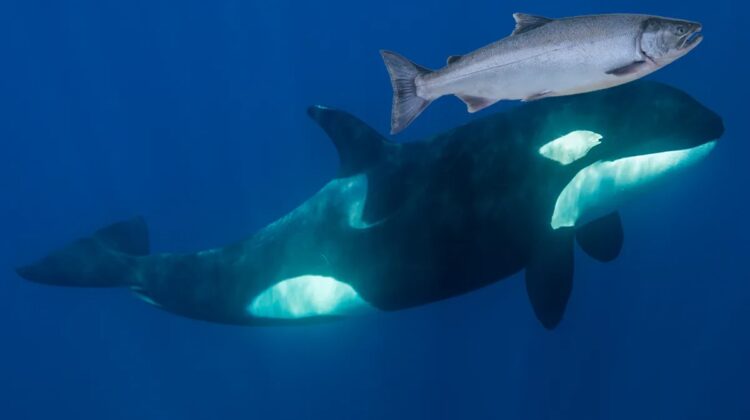
For one summer only, a peculiar trend swept through several orca pods, leaving marine researchers and observers puzzled by the intriguing behavior exhibited by these intelligent creatures.
Orcas, also known as killer whales, have recently garnered attention due to a series of boat attacks in Europe. Experts believe that these incidents might be a form of teaching, as older orcas seem to be guiding calves on how to target boat rudders and halt vessels. Memes and online jokes about “orcanize,” or orcas rising up against humans, and killer whales being compared to communists, have been circulating widely.
While these memes portray orcas as serious and cunning beings, they are not immune to engaging in curious behaviors and trends themselves, as evidenced by the peculiar “dead salmon hat” trend that emerged in 1987.
In the Puget Sound area of the northeast Pacific, a female orca from the k-pod was observed carrying a dead salmon on her nose. Surprisingly, this unusual behavior spread among the orca pods over the next 5-6 weeks, captivating the attention of researchers and marine enthusiasts alike. By the end of the summer, not only her own pod but two other pods were seen adorning themselves with dead salmon hats. It was a sight both fascinating and amusing, reminiscent of a fashion fad sweeping through a human community. However, like many trends, it eventually came to an end, with only a few latecomers participating the following summer, akin to humans discovering trends after they’ve peaked in popularity.
While the dead salmon hat trend showcased a playful and perhaps even creative side of the orcas, other cultural behaviors seen in killer whales in the Salish Sea might appear less endearing from the perspective of their prey. This includes instances of harassing porpoises and, at times, playing with them to the point of causing harm without consuming them.
According to Deborah Giles, the science and research director at Wild Orca, “They do not eat the porpoise; they just kind of play with them to death.”
Further down the west coast of the USA, juvenile orcas have been observed engaging in interesting play with fishing equipment, such as moving crab and prawn traps and entangling themselves in lines, possibly treating it as a game or form of amusement.
“Killer whales do have fads that come and go, and they’re often most prevalent among certain sex and age classes in the population. Then, over time, they tend to disappear,” explained Jared Towers, director of Bay Cetology.

As with any cultural behavior, some trends may persist and be passed down through generations, while others, like the enigmatic dead salmon hats, fade away and become forgotten as the orca community continues to evolve and surprise us with their ever-intriguing behaviors. These glimpses into the playful and adaptive nature of orcas serve as a reminder of the fascinating complexities that exist within the animal kingdom, inspiring us to appreciate and protect the diversity of life that inhabits our oceans.

Leave a Reply